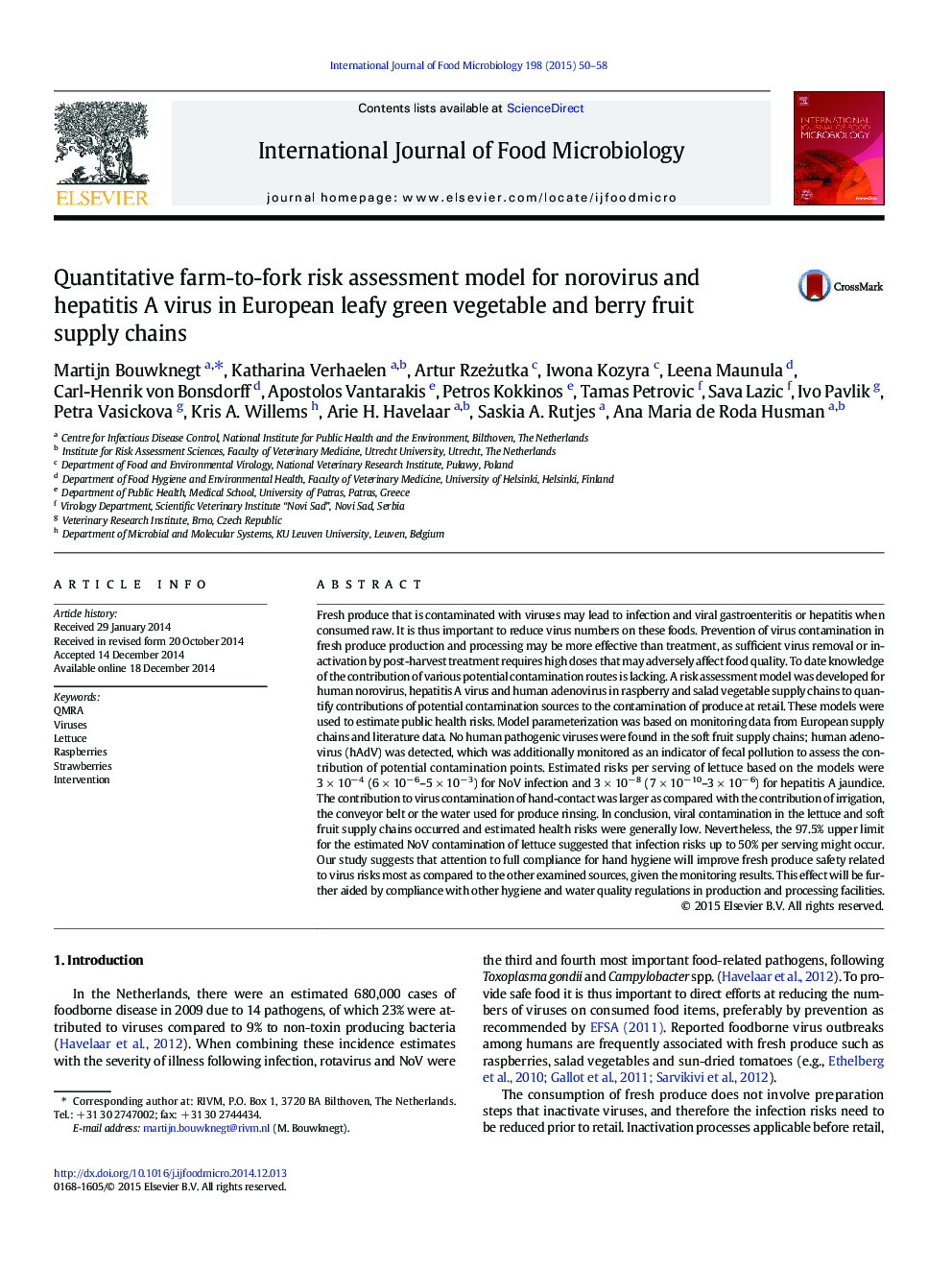| کد مقاله | کد نشریه | سال انتشار | مقاله انگلیسی | نسخه تمام متن |
|---|---|---|---|---|
| 4366708 | 1616585 | 2015 | 9 صفحه PDF | دانلود رایگان |

• Six fresh produce supply chains are modeled to assess consumer health risks.
• Exposure to human norovirus and hepatitis A virus on fresh produce is considered.
• Parameters estimated by field samples from monitoring, experiments and literature.
• Handlers' hands were found to contribute most to produce contamination.
• Estimated health risks were generally < 10− 3 per exposure event.
Fresh produce that is contaminated with viruses may lead to infection and viral gastroenteritis or hepatitis when consumed raw. It is thus important to reduce virus numbers on these foods. Prevention of virus contamination in fresh produce production and processing may be more effective than treatment, as sufficient virus removal or inactivation by post-harvest treatment requires high doses that may adversely affect food quality. To date knowledge of the contribution of various potential contamination routes is lacking. A risk assessment model was developed for human norovirus, hepatitis A virus and human adenovirus in raspberry and salad vegetable supply chains to quantify contributions of potential contamination sources to the contamination of produce at retail. These models were used to estimate public health risks. Model parameterization was based on monitoring data from European supply chains and literature data. No human pathogenic viruses were found in the soft fruit supply chains; human adenovirus (hAdV) was detected, which was additionally monitored as an indicator of fecal pollution to assess the contribution of potential contamination points. Estimated risks per serving of lettuce based on the models were 3 × 10− 4 (6 × 10− 6–5 × 10− 3) for NoV infection and 3 × 10− 8 (7 × 10− 10–3 × 10− 6) for hepatitis A jaundice. The contribution to virus contamination of hand-contact was larger as compared with the contribution of irrigation, the conveyor belt or the water used for produce rinsing. In conclusion, viral contamination in the lettuce and soft fruit supply chains occurred and estimated health risks were generally low. Nevertheless, the 97.5% upper limit for the estimated NoV contamination of lettuce suggested that infection risks up to 50% per serving might occur. Our study suggests that attention to full compliance for hand hygiene will improve fresh produce safety related to virus risks most as compared to the other examined sources, given the monitoring results. This effect will be further aided by compliance with other hygiene and water quality regulations in production and processing facilities.
Journal: International Journal of Food Microbiology - Volume 198, 2 April 2015, Pages 50–58